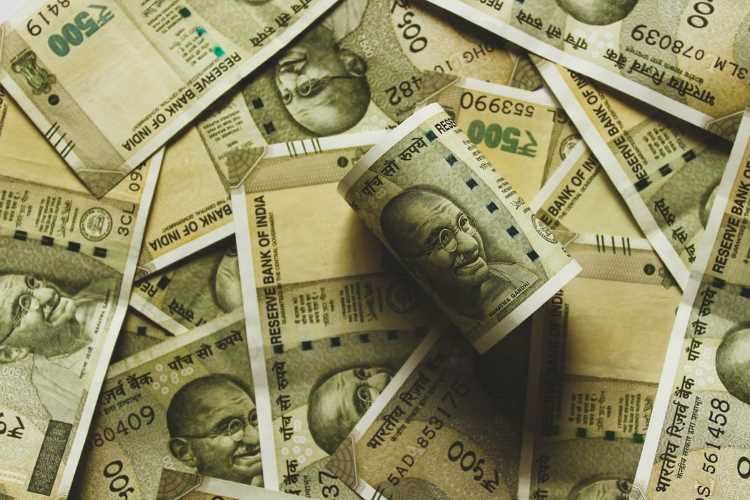
India faces fiscal strain in 2022-23: GST collections recorded a 16.6% rise in October to Rs 1,51,718 crore, the second highest tally since the rollout of the indirect tax regime in 2017. The robust GST collection may have something to do with the festive season sales, but it was also boosted by quarter-end flows linked to last month’s sales. There are also worries about negative growth in GST mop-up from several states. This year saw record indirect tax collection with April recording an all-time high collection of Rs 1,67,540 crore.
There are good numbers coming from direct taxes front too — individual and corporate tax collection jumped 24% in the financial year up to October 8. Fiscal deficit in the first half of the current year was just 37.3% of the budget estimate for the entire year, slightly higher than the figure of 35% in the same period last year. This means that the government has some fiscal room to navigate its finances in the second half.
READ I Bottom-up thinking powers India’s urban transformation: Sanjeev Sanyal
Fiscal strain in H2
Do the robust tax collection numbers mean that the government’s finances are in the pink of health? A closer look at the expenditure figures shows signs of fiscal strain with the government looking to cut corners to accommodate spending on various schemes announced by the government. The indications are that the government will not be able to stick to the fiscal targets for the year with just three months to go before the next Union Budget.
While the government is struggling to meet the fiscal targets for the year, various new schemes that could drain the exchequer have been announced. A recruitment drive for 10 lakh personnel and preparations for the G20 summit will weigh heavy on the government finances. The fiscal deficit for the year could widen to levels last seen in 2013.
READ I Government panels for social media regulation is a regressive move
Subsidy burden weighs
The main source of fiscal strain are the subsidies on food, fuel and fertilisers. The high inflation this year, owing mostly to the Russia-Ukraine war, has made the matters worse. The imminent extension of the free ration scheme or Pradhan Mantri Garib Kalyan Anna Yojana (PMGKY) is adding to the strain.
While the buoyant tax collection is bringing some cheer to the embattled finance minister, there could be an impact of the downward revision of windfall fuel tax in the second half of the year. The government is staring at a problem that needs to be solved soon. There is a need for urgent expenditure cuts as additional spending is likely to derail fiscal calculations of the Union Budget 2022-23.
Amid such precarious position, geopolitical tension threatens to linger. All world nations are battling inflation, forcing central banks to tighten monetary policies to check soaring prices. The US is battling 40-year high consumer inflation which stood at 6.2% in September, unchanged from August despite jumbo rate cuts effected by the Federal Reserve. Eurozone inflation has hit a record high of 10.7%. The UK is witnessing record consumer prices with inflation hitting 11.6%.
The RBI’s monetary policy committee is meeting this week and there are expectations of another substantial hike. Higher inflation also means higher cost of government borrowing needed to bridge the deficit.
Ukraine war and global headwinds
With the Ukraine war lingering beyond expectations, the trend of expensive imports and lower exports will continue. The crisis in international trade with disruptions and high inflation leading to lower demand may not end anytime soon. All these factors will result in a weakened economy and higher trade deficit.
There are various indicators that show the Indian economy’s resilience. The factory output expanded at a faster pace in October as domestic demand remained robust. This led to record hirings by firms that hit the highest in nearly three years. Thanks to the festive season, there was a higher need for personal mobility which saw October gasoline sales rising 1.5% from September.
The geopolitical situation has been weighing down on India’s growth prospects. The International Monetary Fund and World Bank lowering India’s estimated gross domestic product (GDP) growth to less than 7% for the fiscal year 2022-23, with forecasts of a further fall in growth for 2023-24. While the Indian economy may remain the fastest growing major economy, it will definitely face global headwinds. Despite its strength and resilience, the world’s fifth largest economy may not be able to insulate itself from a global recession.
The government currently maintains its fiscal deficit target of 6.4% of the GDP for the current financial year 2022-23. The government is also betting on higher tax revenues (largely due to inflation) and an upside in GDP in nominal terms (also due to inflation) to offset the impact of the negative factors. Officials are keeping a close watch on the current economic situation, recognising that the subsidies and additional spending do pose a challenge.
The RBI’s Monetary Policy Committee is set to meet on Thursday where the economic situation will be discussed threadbare. The meeting will also decide the content of the report which it is mandated to send to the government after failing to keep inflation within the 2-6% target band for three consecutive quarters.
The world is betting on India and China to pull it out of the current crisis. A recent National Bureau of Economic Research (NBER) paper has projected a rise in the economic clout of China and India, while predicting an erosion of the dominance of the United States and Western Europe. As India is set to emerge as a growth engine of the world economy, the closer integration will also make it more vulnerable to hiccups in other nations.
